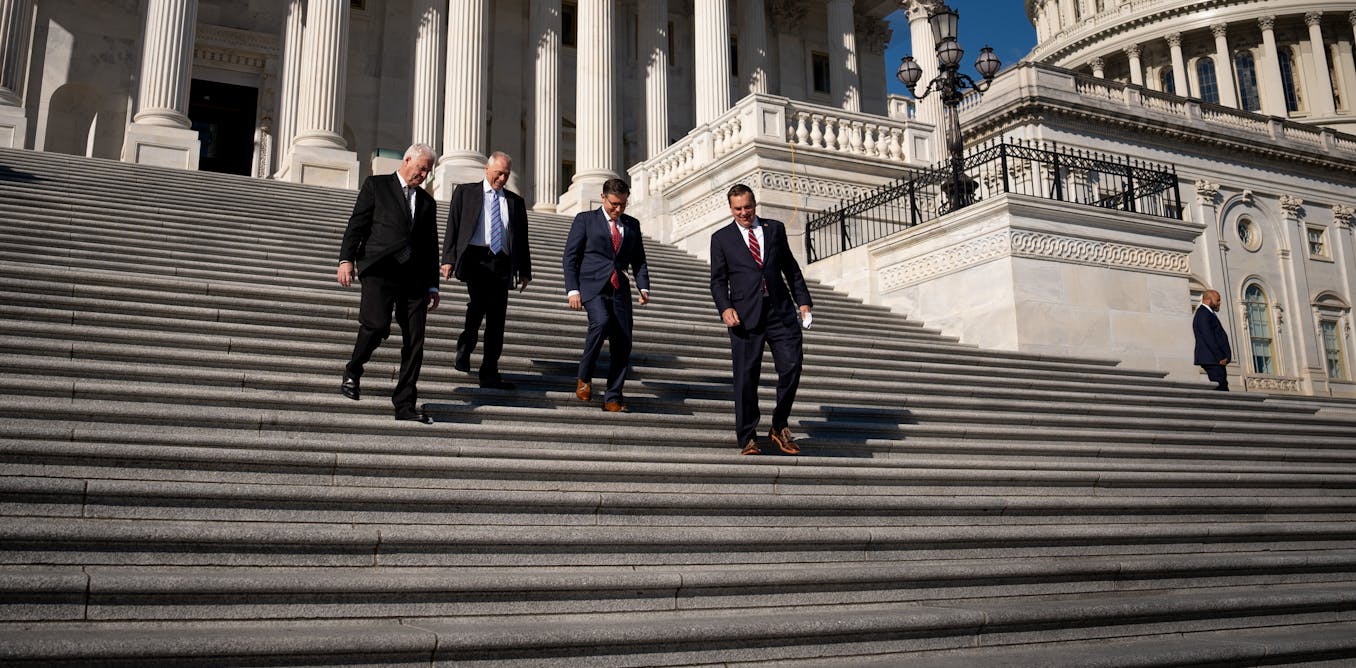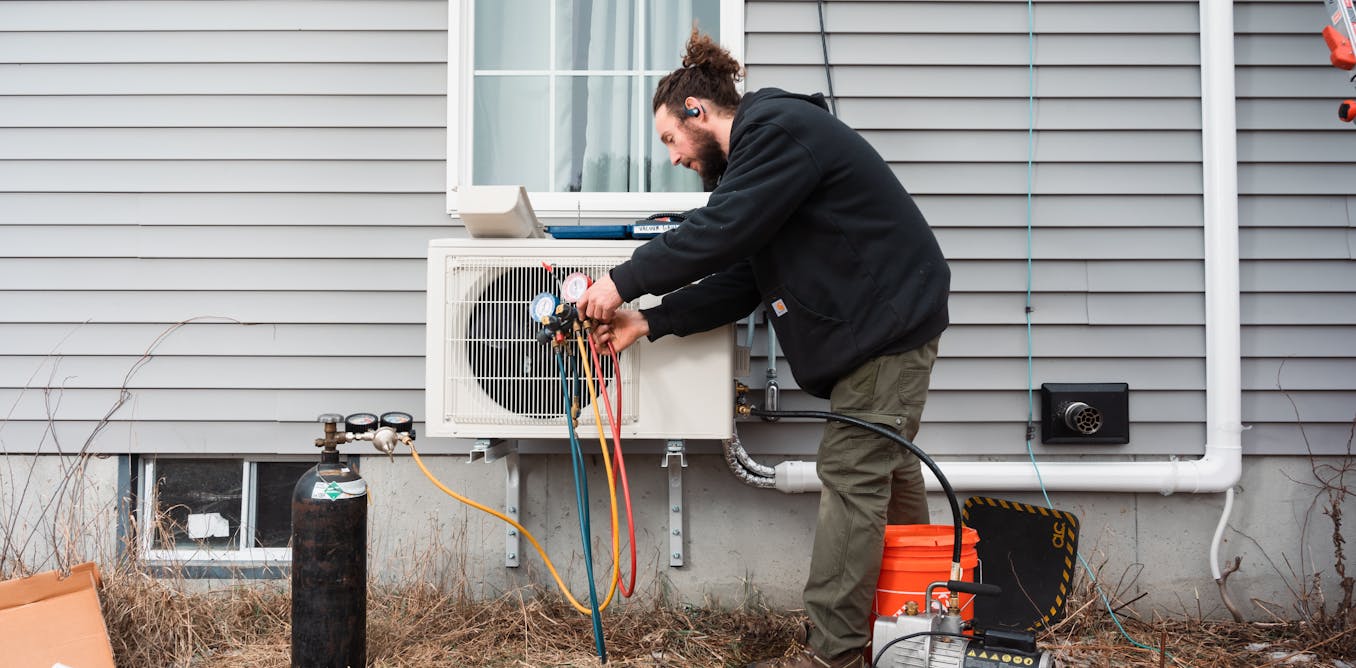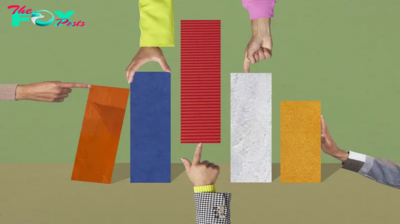Business
How Much Should You Tip? 5 People Share Their Habits
If you feel like you’re being asked to tip more often than ever, you’re not alone. A November report by the Pew Research Center found that 72% of Americans say that tipping is expected in more places today than it was five years ago. From self-service kiosks to fast casual restaurants to grab-and-go cafes, options to tip are everywhere. To better understand tipping culture, TIME asked five people to track their spending over the course of a week, and share what they tipped on and why.
Gig workers and waitstaff often rely on tips to make a living. But Americans increasingly feel that tipping culture has gone too far. Another survey by consumer financial services company Bankrate found that around two in three U.S. adults have a negative view about tipping, and that 41% of U.S. adults think businesses should just pay their employees better, so that they don’t have to rely so heavily on tips.
Tipping is thought to have its roots in ancient Rome, but in its modern form it’s believed to have originated in Tudor England. In the 19th century, when wealthy Americans returned from Travels in Europe, they began tipping out of a desire to appear aristocratic. At first, the practice was strongly opposed by most diners, who argued that it was contrary to the American ideal of a society without stratification by social class. But tipping stuck, in part because Business owners stood to benefit, as the practice shifts some of the burden of paying servers onto customers.
Read More: ‘It’s the Legacy of Slavery’: Here’s the Troubling History Behind Tipping Practices in the U.S.
From tipping on crushed ice to dinner at Chipotle, five consumers explore their relationship with tipping, and explain their tipping choices. Here’s what they said.
(The following responses have been condensed and edited for clarity. The individuals featured asked to remain anonymous to protect their professional interests.)
26-year-old congressional staffer who makes $70,000 living in Washington, D.C.
60-year-old CEO of a consumer insights firm who makes over $300,000 living in Oviedo, Florida
30-year-old policy advisor who makes $120,000 living in Cambridge, Massachusetts
60-year-old consultant who makes $60,000 living in The Woodlands, Texas
27-year-old advocacy professional who makes $110,000 living in East Lansing, Michigan
26-year-old congressional staffer who makes $70,000 living in Washington, D.C.
I try to tip fairly and well. I always tip reasonably at restaurants where I’ve received table service, and often when buying things at a counter—in part because the iPads present tipping options and it feels rude to click “no tip.” I never, ever carry cash, so I typically won’t tip at a hotel or after experiencing other interpersonal kinds of service (I recently went on a boat tour and they had a tip jar at the end). I feel bad about this, but not bad enough to start carrying cash.
Also, as a teenager I was an ice cream scooper in a touristy destination and most of my income was through tips, so I will always tip high school kids doing the hard manual labor of being covered in dairy product.
Day 1: I went to coffee near the office with a coworker to complain about work. I got a chai latte and a feta and mushroom pastry, which cost $10.22. I paid with Apple Pay. The payment tablet prompted me to add a tip—$1 was the lowest option.
I went out to dinner with two coworkers to continue complaining about work. I paid the check—$138.60—with a credit card, and they Venmoed me their share. The tip was calculated for me on the receipt. I paid 20%, which was $23.10 and the middle of the three options offered (the others were 18% and 22%).
Day 2: I took an Uber that cost $42.39. I paid with a credit card saved to the app and tipped $4. I don’t intuitively think to tip Uber and Lyft drivers. I lived in San Francisco during the height of Uber’s VC funding, where Traveling anywhere in the city was really cheap and tipping was not part of the app. I usually will tip drivers eventually, since I know that’s how they make much of their income, but I typically will do a few dollars, rather than the pre-suggested 20%, particularly on expensive rides.
I ordered sushi takeout that cost $15.24. I paid with a credit card and tipped 20%, which was $2.79. We ordered takeout and paid at the counter. The receipt had boxes on it: 15%, 18%, and 20%. I checked 20% and told my friend about how I’m working on this tipping diary. She said “I would never tip for takeout, they didn’t serve us.”
Day 3: For lunch, I had surprisingly good airport food from a counter serve place, which cost $16.02. I paid with Apple Pay and tipped $1.92, which was the lowest option of the pre-set amounts. I do think cashiers deserve to be tipped, and, again, it’s hard to click the “no tip” button.
I took an Uber from the airport to my friend’s house, which cost $38.59. I paid with a credit card saved to the app and tipped $4. Do people tip on Ubers? Am I being cheap here?
Day 4: I got two coffees that cost $8.85 in total. I paid by tapping my phone to the payment tablet and tipped $1.59, which was 18%. This was a coffee shop at a convenience store, but I practiced coffee shop etiquette and tipped.
Lunch cost $16.81. I paid with Apple Pay on a tablet and tipped $3.03, which was 18% and the middle option on the tablet. Then, I got shaved ice that cost $9.11. I paid by tapping my phone to the payment tablet and tipped $1, which was the cheapest of the pre-selected options. Later, I got cookies and pie that cost $14.41. I paid with Apple Pay on a tablet and tipped $2.16, which was 15%. In retrospect, I feel a little silly tipping for this—we grabbed a piece of pie out of a fridge and a package of cookies off a shelf and brought them to the counter to pay.
Day 5: I bought coffees—they cost $12.42. I paid with my phone and tipped $1.86 (15%—the middle option).
Later on, I got post-drinks pizza that cost $7.33. I paid by tapping my phone to the payment tablet and tipped $1.32 (18%). This was actually the worst pizza I’ve ever had in my life.
Day 6: I got udon soup for dinner that cost $22.05. I ordered online and there was not an option to tip on this transaction! Later, I bought shaved ice for $7.55. I paid with Apple Pay and tipped $1.36, which was 18%. This wasn't actually very good shaved ice.
Day 7: I got sushi takeout for dinner that cost $15.56. I paid with Apple Pay on a tablet and tipped $3.11, which was 20%. This was a counter-service situation, but I could see the workers behind the counter making the rolls themselves to order!
I took a Lyft to the airport that cost $32.82. I paid with a credit card saved to the app and tipped $4.92. This Lyft driver was particularly friendly and delightful, so I tipped more than I typically would.
I got airport mac and cheese that cost $13.72. I paid with Apple Pay on a tablet and tipped $2.06, which was the lowest option of the pre-set amounts.
After my flight, I took another Lyft that cost $10.99. I paid with a credit card saved to the app but I didn’t mean to not tip! I must have clicked out of the app without doing so. I don’t see a way to retroactively add a tip.
Total in tips at the end of the week: $59.22
60-year-old CEO of a consumer insights firm who makes over $300,000 living in Oviedo, Florida
I generally tip for service when the staff has done some “work,” like at a sit down restaurant or at a hairdresser where a personal service was provided. I’ll generally tip 15%-25% depending on the quality of the overall experience as well as the personal attention provided by the staff. Recognizing that servers in restaurants rely on their tips to make up for a below-market wage, I’ll tend to go on the higher side provided they show interest in earning it, with the minimum being 15%.
I don’t like to tip in situations where there isn’t an extra element of service, like at a fast food place or, my pet peeve, at my dermatologist! I’ve noticed more institutions asking for a “tip” to be added to the bill with options starting at 18%. I don’t believe I should be tipping someone that is paid to do the job they are doing and the job is “put that pastry into a box and give it to the customer.” Also, I’m never quite sure who that tip goes to, so that is another reason for me not to tip. My general view is pay your staff a fair wage and then charge me accordingly. Don’t ask me to subsidize their wages or, worse, add to your bottom line by shaming me into a tip.
Day 1: I got dinner at a local taco joint. It cost $43.23. I paid with a card and tipped $6.77 to take it up to $50. I generally tip 15% and round things off—it’s easier for me when reviewing charges on the back end.
Day 2: N/A
Day 3: I got carry-out baked goods from a local bakery. I paid cash for the goods ($11.60) then put $2 in the tip jar. They did a great job explaining how the two items compared and packed them in a box really well. They were very pleasant and polite. I generally would just have tipped $1.
Day 4: I bought carry-out Indian food for $78.43, which I paid with a card. I don’t feel like carry-out in a dine-in restaurant warrants a tip. There is no element of service that I experience. I’ll occasionally tip 10% if the option is there on the screen to tap, but these guys gave 25%, 22%, and 18% along with “other.” The ridiculousness of thinking I’ll give a tip when their staff has to do zero work and making that above the norm annoyed me.
Day 5: N/A
Day 6: N/A
Day 7: N/A
Total in tips at the end of the week: $8.77
30-year-old policy advisor who makes $120,000 living in Cambridge, Massachusetts
I’ll always tip in situations in which it’s clear it's expected of me. I’ll also tip if I pay after receiving a service, and I thought it was good. I’m more likely to tip if I like the employee(s) I’m dealing with or like and/or frequent the establishment.
Day 1: I went to Chipotle for a chicken burrito bowl with a fountain soda, which cost $16.16. I paid with a card and did not leave a tip. I go here for lunch at least once a week. The staff were friendly today. They did give me a scoop of mild salsa when I asked only for the spicy, but I wasn’t going to tip anyway. I just don’t get the sense that I’m expected to at fast casual places like that.
Day 2: I went back to the same Chipotle as before and got another chicken burrito bowl with a fountain soda for $16.16. I paid with a card and did not leave a tip.
Day 3: I went back to the same Chipotle again and got a steak burrito bowl with a fountain soda for $18.03. I paid with a card and did not leave a tip.
Day 4: I got coffee and a breakfast sandwich from my locally owned coffee shop for $9.76. The employees know me by name there so I paid with a card and tipped $1.95. I love this coffee shop—I go there regularly, and I feel it's expected to tip at coffee shops. For lunch, I went back to the same Chipotle and got another chicken burrito bowl for $16.16. I paid with a card and did not leave a tip.
I took an Uber that cost $17.58. My driver was prompt and polite so I paid with a card, gave five stars, and tipped $1.76 which was 10%. I had dinner at a restaurant before going to see a play that cost $70.80. I paid with a card and tipped $14, which was 20%. I always tip 20% for meals with servers unless the service is especially bad. After the play I had drinks at a bar that cost $38.70. I paid with a card and tipped $7, which was 20%. I always tip 20% for drinks. I took another Uber home that cost $16.59. My driver was prompt and didn’t, like, say anything rude during the ride so I gave him five stars and a 10% tip ($1.66).
Day 5: I got a black coffee from the local coffee shop I love for $3.80. I paid with a card, but did not leave a tip this time. I wasn’t really thinking about it in the moment, but I think it was because I just got a black coffee and there’s not much that goes into preparing that.
For breakfast, I went to a fast casual place I had never tried before and got another coffee and a breakfast sandwich for $9.85. I paid with a card and tipped $1.97, which was 15%. After that, I stopped on a long bike ride and got a salad for $14.99 from a locally owned place. I paid with a card, but did not leave a tip. I like to tip at locally owned places, but I saw that the salads were pre-made when I was checking out, which I didn’t like. Honestly, it was also probably because I knew I’d never go back there.
I went back to the same Chipotle for lunch, and got a steak burrito bowl for $18.03. I paid with a card and did not leave a tip.
Day 6: I went back to my regular local coffee shop and got coffee and a breakfast sandwich for $14.03. I paid with a card and tipped $1.83 which was 15% as usual. Later, I got drinks at TopGolf (the indoor driving range) that cost $28.09. The service was fine, so I tipped 20% ($4.70) as per usual.
Day 7: I got a turkey sandwich, water and chips for lunch at a ski lodge cafeteria for $15.41. I paid with a card and did not leave a tip since there was no service and the food wasn’t made to order.
Later, I had dinner which included a sandwich and two beers and cost $33.81. Since there was table service, I paid with a card and tipped $5.60, which was 20%.
Total in tips at the end of the week: $40.47
60-year-old consultant who makes $60,000 living in The Woodlands, Texas
At places where I stand in a line to order—fast casual places—I tip 10%-15%. I tip 20% if I am getting good table service. I don’t tip for take out.
Day 1: I went to Nando’s in Houston. I paid $23.98 with my card, and tipped $3.89. It was a quick lunch and there was no table service.
Day 2: I had a casual dinner with friends at Palette Indian Kitchen. It cost $67.12 and I tipped $13.42—the table service was good.
Day 3: I got a quick lunch back at the Kitchen. I paid $16.24 on card and tipped $2.44—no table service.
Day 4: I went for dinner at Oporto, a local restaurant. I paid $390.50 on my card and tipped $78.10—it was my treat. We were a party of eight so the tip was automatic. I did not mind paying the 20% since the service was good.
Day 5: N/A
Day 6: N/A
Day 7: N/A
Total in tips at the end of the week: $97.85
27-year-old advocacy professional who makes $110,000 living in East Lansing, Michigan
People deserve to be paid for their work. I used to tip 20% on basically everything, back when you would only be asked to tip in a small number of places. I still tip 20% for any sit down meal service, bartender, rideshare, and delivery, but now I don't tip for takeout, or checking out at coffee shops unless there's like a specific reason to.
I also believe that the wage should be on the establishment, not the customers, and I would much rather pay a bit extra for the base price, and know that every staffer is paid a consistent or fair rate, than having tipping allowing businesses to skirt paying their people. I know this is different for servers specifically, who make more on average, but tipping has extended far beyond servers at this point.
Day 1: I got dinner from Chipotle, which cost $9. The woman working was nice, and the guy in front of me was rude to her, so I paid with a card and left a $2 tip. She was also generous with portions, which deserves a tip at Chipotle. I also picked up takeout sushi for my wife for $26. I paid with a card and did not leave a tip—I just don't see a reason to tip on takeout.
Day 2: I went to a local taco restaurant for lunch and paid $18.99. Since it was a sit-down restaurant, I paid with a card and tipped $5.01, which was close to 20%. I added an extra cent because whole numbers make my brain feel good. I picked up Pad Thai takeout for my wife. It cost $10.50, I paid with a card and did not leave a tip since it was takeout.
I went to CVS and bought masks for a man outside the store for $15.89. I paid with a card and did not leave a tip. There was a donation screen, but since I was quite literally buying something for a random man on the street, I felt like I didn't need to add a donation on top of that.
Day 3: I bought movie tickets, popcorn, and a drink for $39.96. I paid with a card, but did not leave a tip when prompted. I don't feel I need to tip in situations like cafeteria-style or movie theaters. After the movie, I went to a bar and had drinks that cost $12.44. Since there was a bartender, I paid with a card and tipped $3, which was around 20%. Sometimes I tip based on how many drinks I've ordered rather than a flat percentage. I’ll do a dollar a drink or something, but this time I just tipped doing quick math, which was around 20%.
Day 4: I went for lunch at a Chipotle-style restaurant called Los Amigos Taqueria and got food that cost $12.57. The person working was nice so when the tablet prompted tip amounts of $1, $1.50 and $2, I went in the middle.
I went out to dinner, which cost $68.90. Since it was full service, I paid with a card and calculated 20% on my phone which came out to $13.79. I think I literally did the calculations on my phone for this. I don’t have a strong reason for why I did this, but just did.
Day 5: I got food from a cafeteria that cost $21.60. When I was asked to tip at checkout, I paid with a card but I did not leave a tip. I was actually a little taken back. I went to a cafeteria where I had to pick out my own food and was asked for a tip at checkout. It’s like if I were to go grocery shopping and then was asked for a tip from the cashier.
Later, I went to a restaurant with 15 people and put it all on my card—it cost $664.20. The others Venmoed me later. The tablet prompted 18%, 20% and 25% so I hit 20% which was $132.84.
Day 6: I went to breakfast at a cafe in Portland on the drive back to Brighton from a ski trip in Maine, and had food that cost $21.19. Since it was a sit-down cafe with a server, I paid with a card and tipped $5 which was close to 20%. I had to leave quickly so I tipped fast.
Day 7: I bought a takeout salad that cost $16.48. Since it was takeout, I paid with a card and did not leave a tip. Later, I went to a cafe in Brighton, where I was staying with a friend, and had food that cost $23.75. Since it was a sit-down with a server, I paid with a card and tipped $6.50 which was around 20% calculated quickly.
Total in tips at the end of the week: $169.64
-

 Business1d ago
Business1d agoUS House passes measure that could punish nonprofits Treasury Department decides are ‘terrorist’
-

 Business1d ago
Business1d agoFast fashion may seem cheap, but it’s taking a costly toll on the planet − and on millions of young customers
-

 Business2d ago
Business2d agoNew Information: These HV Big Lots Are Now Staying Open
-

 Business2d ago
Business2d agoBrush Fire Rages On Near Butternut In Great Barrington, MA
-

 Business4d ago
Business4d agoCarbon offsets can help bring energy efficiency to low-income Americans − our Nashville data shows it could be a win for everyone
-

 Business4d ago
Business4d agoWorkplace diversity training programs are everywhere, but their effectiveness varies widely
-

 Business4d ago
Business4d agoFirm bosses urged to make use of Welsh language to revitalise rural economic system
-

 Business5d ago
Business5d agoDonor-advised funds are drawing a lot of assets besides cash – taking a bigger bite out of tax revenue than other kinds of charitable giving



























